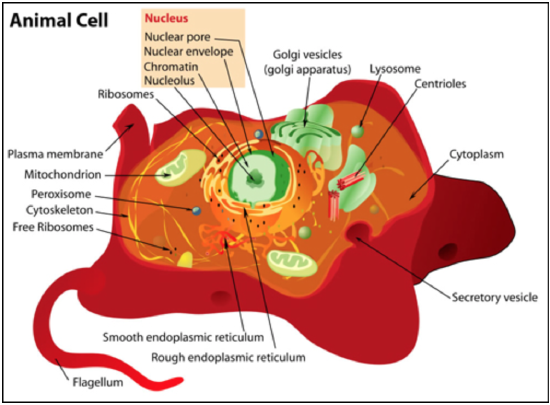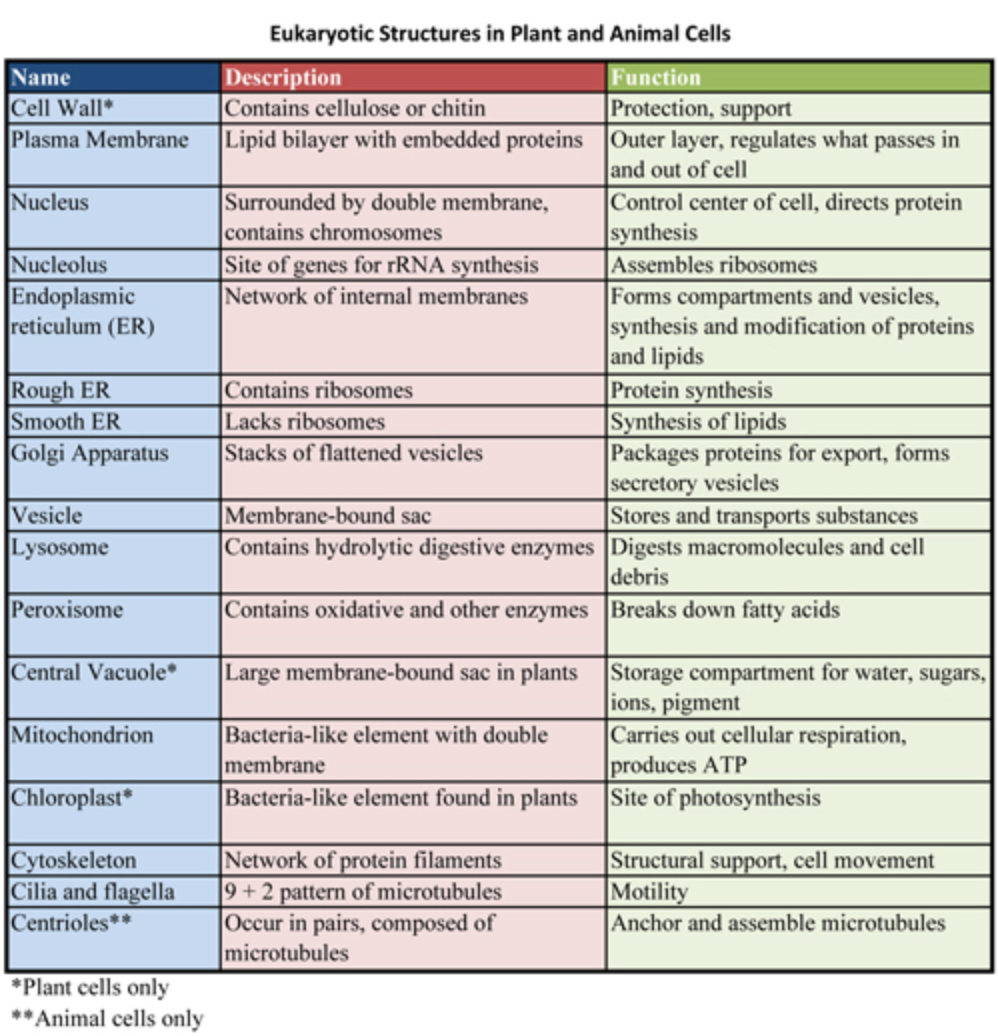Cell Structure and Function
- Page ID
- 23850
1. Description of Cell Structure and Function.
Cells are fundamental to the study of biology. Every living thing is composed of cells, they are the building blocks of life. All cells share similar characteristics and can be defined by the cell theory.
Cell Theory
1. All living things are composed of cells.
2. All cells arise from preexisting cells through cell division.
3. Cells contain hereditary material, which they pass to daughter cells during cell division.
4. The chemical composition of all cells is quite similar.
5. The metabolic processes associated with life occur within cells.
All cells have a few basic features in common:
1. Plasma membrane: a selective barrier which encloses a cell (plant and bacteria cells also contain a cell wall).
2. Cytosol: located inside the plasma membrane, this is a jelly-like fluid that supports organelles and other cellular components.
3. Cytoplasm: the cytosol and all the organelles other than the nucleus.
4. Ribosomes: the organelles on which protein synthesis takes place.
5. DNA: the genetic material which is contained in one or more chromosomes.
Despite the fact that all cells share the above characteristics, they can be remarkably different in size, shape and function.
Prokaryotic and Eukaryotic Cells
There are two major categories or types of cells: prokaryotic and eukaryotic.

Figure \(\PageIndex{1}\). prokaryotic cell (CC BY-NC-SA; LipeFontoura)

Figure \(\PageIndex{2}\). animal cell (CC BY-NC-SA; LadyOfHats)
Prokaryotic cells are less organized and less dynamic than eukaryotic cells. Prokaryotes lack the organelles that are found in eukaryotic cells. Organelles are small, membraneous bodies, each with a specific structure and function. Prokaryotes do have cytoplasm, the material contained by a plasma membrane and cell wall. The cytoplasm includes ribosomes (the site of protein synthesis) and enzymes. Prokaryotes also have a nucleoid, a region in the bacterial cell interior in which the DNA is physically organized but not enclosed by a membrane. Bacteria and archaebacteria are prokaryotic.
Plant, animal and fungal cells are eukaryotic cells. The nucleus in a eukaryotic cell is bound by a nuclear envelope and contains nucleoplasm. The cytoplasm, found between the plasma membrane and the nucleus, consists of fluid and the organelles. Many organelles have membranes, such as the nucleolus, endoplasmic reticulum, Golgi apparatus, lysosomes, and chloroplast.

Figure \(\PageIndex{3}\). (CC BY-NC-SA)

Figure \(\PageIndex{4}\). plant cell (CC BY-NC-SA; LadyOfHats)

Cell Structure and Function Tutorial by Dr. Katherine Harris is licensed under a Creative Commons Attribution-NonCommercial-ShareAlike 3.0 Unported License.
This tutorial was funded by the Title V-STEM Grant #P031S090007.


